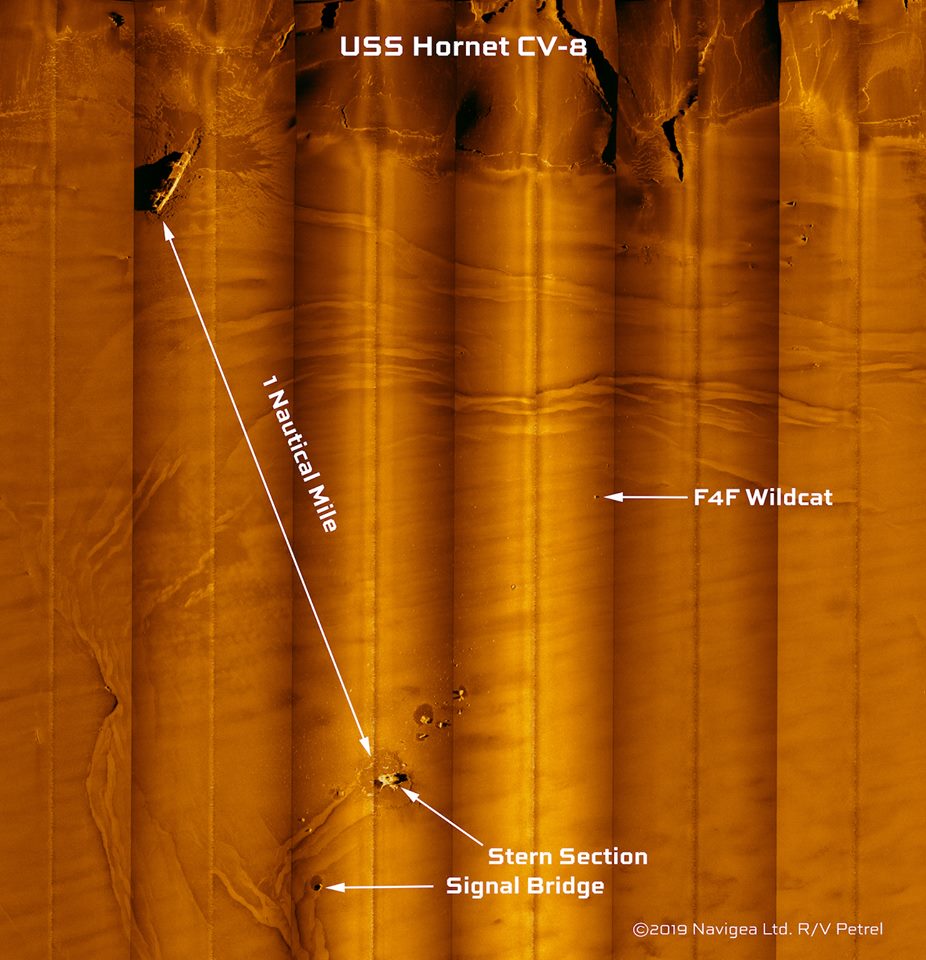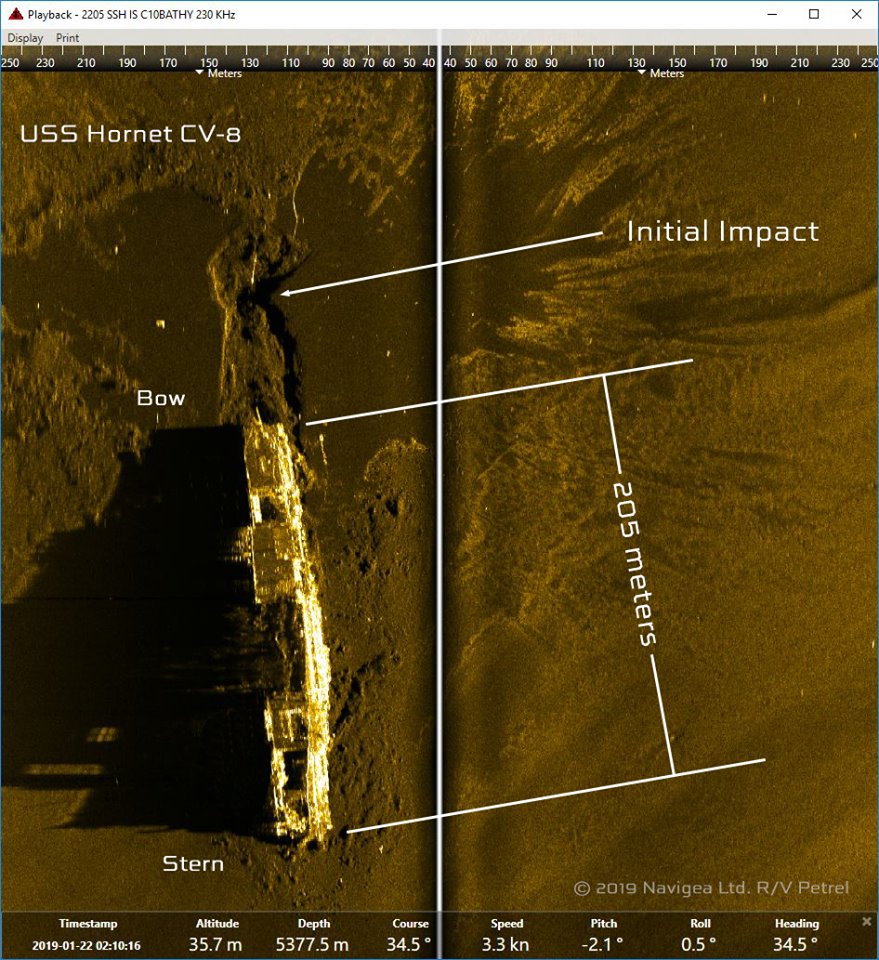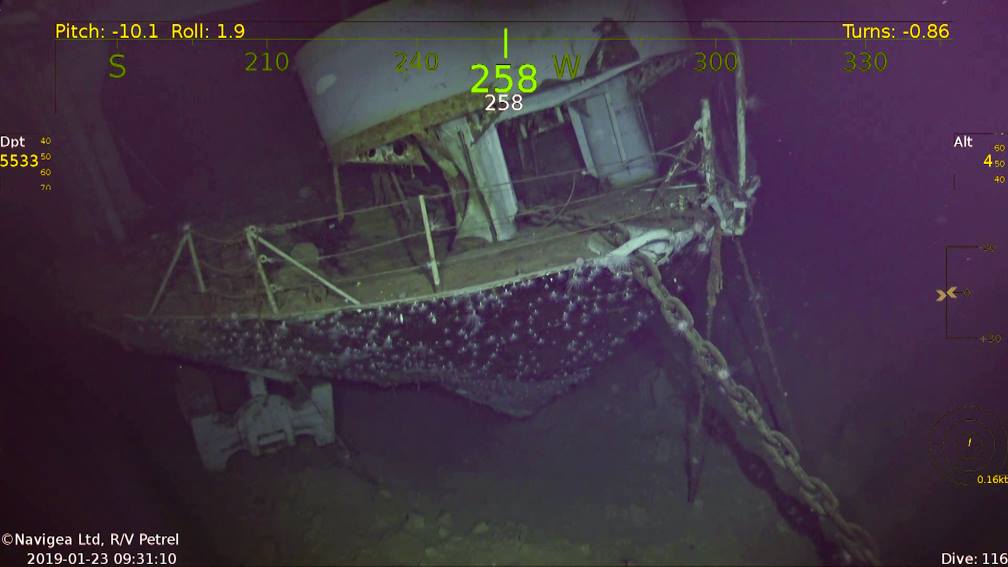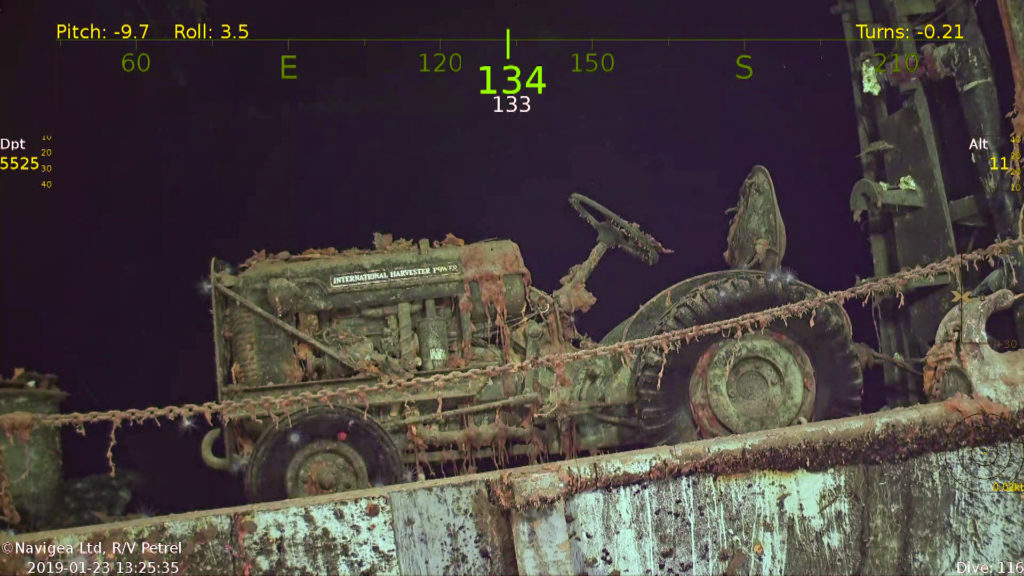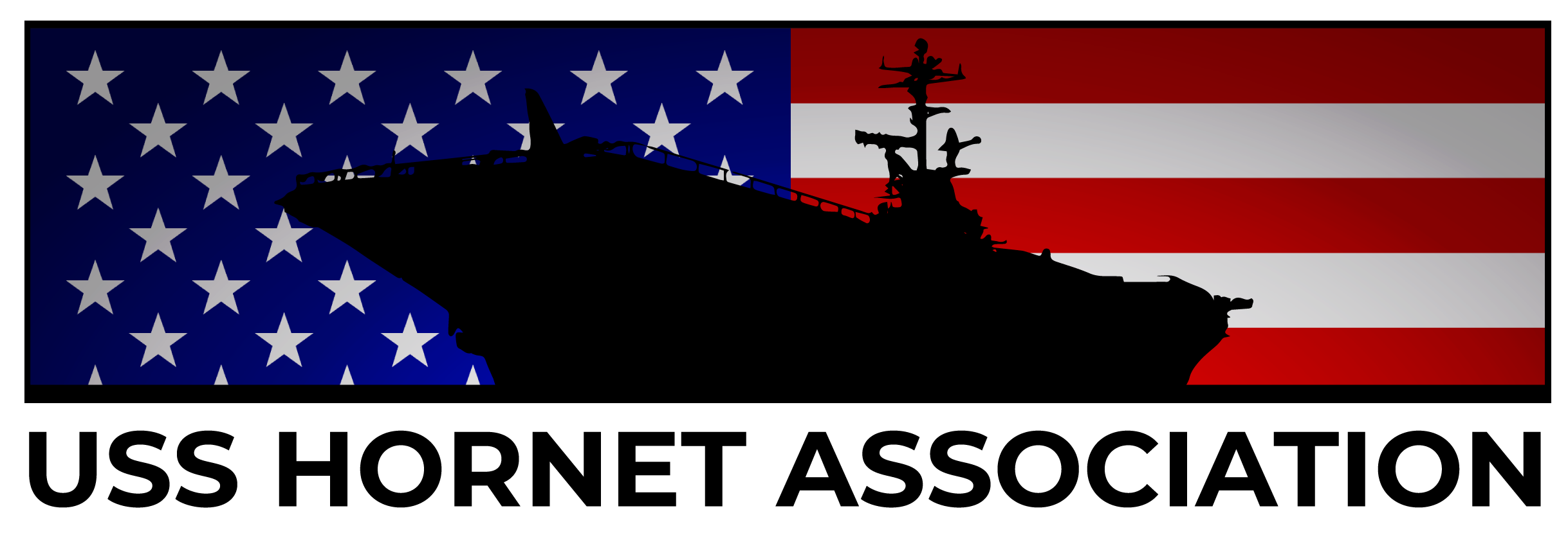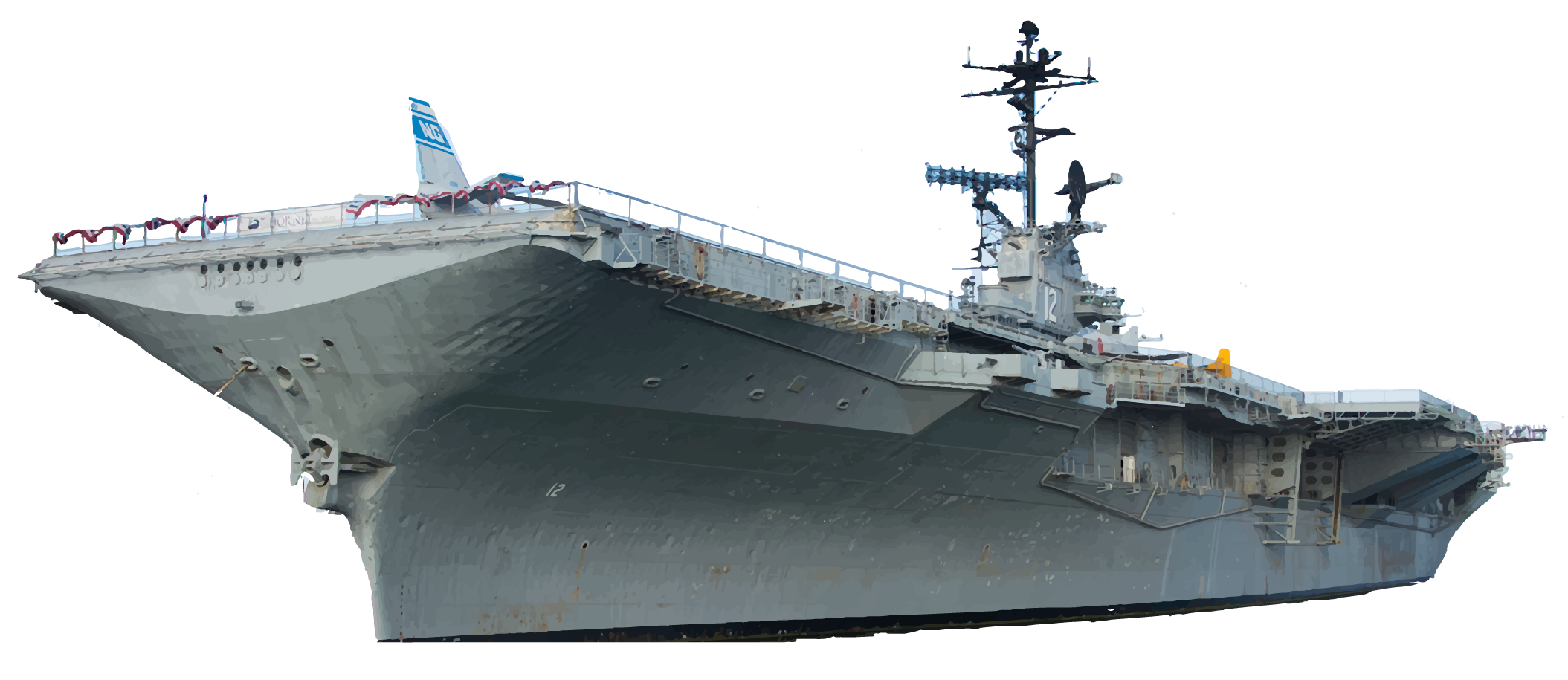
USS Hornet History
Our Proud History
The name HORNET is one of the most distinguished in American naval history. The fist ship to bear the name was a sloop, armed with ten 9-pounders, commissioned at Baltimore, Maryland, in 1775. After several minor engagements during War of Independence with England, she was cornered by a vastly superior enemy force in the Delaware River below Philadelphia. On 15 November 1777, when supporting shore batteries were put out of action, Captain John Nicolson was ordered to destroy his ship to prevent it from falling into enemy hands.
The second HORNET, also a 10-gun sloop, played an active part in the Tiplian War. She sailed to Malta in 1805 under the command of Lieutenant Samuel Evans as part of Commodore Roger’s Squadron. In April of that year, in company with two other American warships, she attacked the port of Derna on the Libyan coast. The small group anchored within range of the shore batteries and silenced the Turkish guns in less than one hour. This enabled American marines, under command of General Eaton, to capture the city and proved to be the deciding action of the conflict. After this short war, the HORNET was sold out of the service the next year at Charleston, South Carolina.
HORNET number three was destined for an active and colorful career when launched at Baltimore on 28 July 1805. Modeled after French warships of the time, she carried an armament of 18 short 32-pounders and two long 18-pounders. She took part in a number of actions and captured several prizes in the War of 1812. In company with the famous warship CONSTITUTION, on a cruise in South American waters, she blockaded the harbor of Bahia, Brazil, confining the British warship MONTAGU required HORNET to escape by retiring in the darkness.
HORNET then cruised down the Brazilian coast, taking several prizes including the brig RESOLUTION with $25,000 in specie aboard. In February 1813, off the Guiana coast she engaged PEACOCK, a British Brig-of-war carrying 18 guns. The two ships exchanged broadsides, then HORNET scored a second broadside at point-blank range. The British warship, her commander slain, surrendered, the floundered and sank a few hours later. In one more decisive action before the end of the war, HORNET sank the British sloop PENGUIN off Tristan de Cunha, March 1815.
In subsequent years this HORNET saw action against African slavers and Cuban pirates. In February 1829 she sailed on her last cruise. Under the command of Master Commandant Otho Morris, on 10 September 1829 off Tampico, she was torn from her moorings during a severe gale and never seen again.
The fourth ship to bear the name HORNET was a small schooner, used principally for inshore patrol work as a dispatch vessel.
An iron-side wheeler was number five, and the first HORNET to be steam-propelled. She was captured from the Confederates off North Carolina in 1864 and saw service with the U.S. Fleet during the rest of the Civil War.
The sixth HORNET was a converted yacht, purchased for use in the Spanish-American War. Armed with ony three 6-pounders, two 1-pounders, and four machine guns, she distinguished herself in several actions off Cuba. After participating in operations at Daiquiri and Siboney, this HORNET, in company with two other converted yachts, met a superior force of Spanish ships at Manzanillo. The Spanish squadron included one cruiser, four gunboats, one torpedo boat and three small craft. In spite of being outnumbered three to one, the American ships attacked the Spanish group; in a two and one half hour action they succeeded in sinking of disabling the entire enemy squadron. In this action, HORNET fired 426 six-pounder shells and 250 one-pounders, while suffering no casualties. In 1910 she was sold out of service.
Hornet CV-8; For the next thirty-one years, the American Navy had no warship carrying the inspiring name HORNET. Therefore, when the seventh HORNET, a sleek new air-craft carrier, slid down the ways at Newport News on 14 December 1940, Secretary of the Navy Frank Knox stated: “Today we are present at the rebirth of a great name in the history of the Navy.”
One year after launching of HORNET CV-8, war began with the infamous attack of Pearl Harbor by the Japanese Navy. In the following months, Hornet CV-8 would carry on the proud tradition of her namesake predecessors, culminating on April 18, 1942 with the launch of sixteen Doolittle Raiders’ B-25s and the successful raid on Tokyo.
Only a few months later on October 26th, during the battle of Santa Cruz, Hornet CV-8 was fatally damaged by a coordinated attack of Japanese dive bombers and torpedo planes as well as two Japanese suicide planes. Although formally abandoned at 16:25 that evening, she remained afloat until 01:35 on October 27th when after shelling and torpedo strikes by the USS Mustin and USS Anderson to prevent capture by Japanese forces, and a follow up attack by Japanese surface forces, USS Hornet CV-8 finally slid beneath the waves.
The eighth HORNET, the Essex Class, began her career on August 3, 1942, as the Kearsarge. The hull name was changed to Hornet when CV-8 was lost. Hornet CV-12 was launched on August 30, 1943 and commissioned November 29, 1943.
After her shakedown, Hornet proceeded to the west coast and eventually to Pearl Harbor. On March 15, 1944, ADM. J. J. “Jocko” Clark made Hornet his Flagship and later that same day left Pearl to enter combat in the Western Pacific.
Over the next eighteen months, the crew and squadrons of Hornet CV-12 honored her history with incredible combat achievements against Japanese forces. She became one of the most decorated ships in the Pacific fleet, earning 9 battle stars for WWII operations, as well as the Presidential Unit Citation.
Her combat roles included Multiple Asiatic-Pacific raids, The Hollandia Operation, The Marianas Operation, the Western Caroline Islands Operation, Western New Guinea Operation, Leyte Operation, and the Luzon, Iwo Jima and Okinawa Gunto Operations.
Following the end of the war, Hornet CV-12 participated in five “Magic Carpet Rides”, bringing home nearly 20,000 battle weary soldiers and sailors. On August 14, 1946, after an extensive overhaul at Hunters Point, San Francisco, Hornet CV-12 was placed into inactive commission as part of the San Francisco, 19th Fleet.
On March 20, 1951, Hornet CV-12 was recommissioned at the San Francisco Naval Shipyard under the command of Capt. Francis L. Busey. On April 10, she departed for the Brooklyn Navy Yard for major modernization, the SCB-27A program. On October 31, 1953, after nearly two years at the Naval Shipyard, Hornet was recommissioned as the CVA-12, and left the yard for her sea trials. On May 11, 1954, after extensive testing and readiness evaluations, Hornet CVA-12 left for an eight month global cruise with Air Group 9 (CVG-9) onboard.
Over the next several years, Hornet took part in a variety of exercises and operations throughout the Pacific as part of the 7th Fleet. In 1956, Hornet entered dry dock in Bremerton for her next modernization phase, SCB-125, which included her new enclosed bow, and the much larger angle deck addition to the flight deck.
On June 27th, 1958, Hornet was designated as CVS-12, an Anti-Submarine Warfare Carrier. In this role, and with a variety of Air Groups on board, Hornet continued her participation in several WestPac operations, culminating with her 11th Westpac cruise under the command of Capt. Jackson A. Stockton.
On September 30, 1968, Hornet left Long Beach on her way to Pearl Harbor and eventually to her final WestPac assignment at Yankee Station off Vietnam. For this final effort in WestPac, Hornet was awarded the Meritorious Unit Commendation for service with the Seventh Fleet. She returned to Long Beach on May 13th, 1969 after dropping off her Air Groups in San Diego earlier that morning. Unbeknownst to only a few, Hornet was about to begin her greatest peace time achievement.
On May 23rd, 1969, Capt. Carl J. Seiberlich took command of Hornet in Long Beach. On June 1, Capt. Seiberlich announced to the crew that Hornet had been selected as the primary recovery ship for Apollo 11, the first moon landing space flight.
On June 27th, after a brief refresher training period off San Diego, Hornet departed for Pearl Harbor and immediately upon arrival, began training off Hawaii for the recovery. On July 14th, Hornet was on station in the abort recovery area for the Apollo 11 launch. With a successful launch and eventual landing on the moon, astronauts Neil Armstrong, Edwin Aldrin and Michael Collins set their sights for their return to earth and the USS Hornet on station in the South Pacific.
At 05:50 on the morning of July 24, 1969, with President Nixon onboard, Apollo 11 splashed down just eleven miles from Hornet. Following a flawless recovery of the astronauts and their Apollo capsule, “Hornet + 3” set sail for Pearl Harbor arriving on July 26, to a resounding welcome. By popular vote of the crew, Hornet set sail later that afternoon for Long Beach, arriving home on August 1.
Following a series of joint exercises off the California coast, Hornet was again selected as the prime recovery ship, now for Apollo 12. Departing for Hawaii on October 27, 1969, to commence additional recovery training. Hornet sailed to the recovery area where on November 24, she completed her second successful Apollo recovery.
1969 proved to be the last year of Hornet’s amazing twenty seven year career. In March of 1970, Hornet and her reduced crew made the final operational voyage north to Bremerton Naval Shipyard to be decommissioned. On June 26, 1970, with her crew and officers marching off the ship, Hornet’s ensign was lowered for the last time of her active operational service.
The final word.
By late 1989, Hornet had been stricken from the fleet and that she would be sold as scrap to the highest bidder. About that same time, a significant group of dedicated Hornet enthusiasts had formed the USS Hornet Historical Museum Association (HHMA) in the Seattle area, in hope of saving the ship. Although extensive negotiations took place with the Navy, it became clear that the Associations proposal to preserve the ship would be denied. And in January 1993, the bid process began for the destruction of the ship.
Eventually Hornet was towed to Hunters Point, San Francisco, the beginning of its final journey. Yet all was not lost. With the formation of a new committee and the support of the Alameda Naval Air Station CO Capt. Jim Dodge, the Navy was once again petitioned for the preservation of Hornet. This time it was the Alameda group, the Aircraft Carrier Hornet Foundation (ACHF), negotiating not only with the Navy, but also with the scrapping firm that held the rights to the ship. This time the efforts proved successful and after much work and extensive fund raising, the USS Hornet Air Sea and Space Museum was dedicated in 1998 and is now permanently docked at the old Naval Air Station Alameda, CA.
It should be noted that during the years when the USS Hornet Historical Museum Association in Washington State were petitioning the Navy for the preservation of Hornet, they did achieve what would become critical in the final efforts to save the ship. On December 4, 1991, after much effort by the HHMA, the Hornet was designated a National Historic Landmark. Without that designation, it is very possible that Hornet could not have been saved. Because of the efforts of both the HHMA in Washington State and the ACHF in Alameda, the USS Hornet will live on to share its history with its many thousand visitors who walk her decks every year.
USS Hornet CV-8 Located
